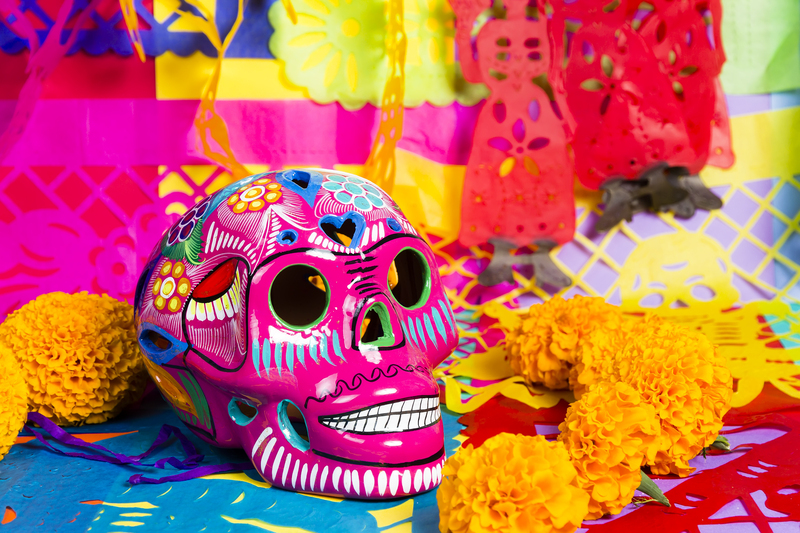The Secret World: 7 Hidden Facts About Tulips Unlocked
Posted on 23/08/2025
The Secret World: 7 Hidden Facts About Tulips Unlocked
Tulips have long captured the hearts of botanists, gardeners, and floral enthusiasts around the world. Their vibrant colors, elegant shapes, and rich history make them one of the most beloved flowers globally. However, beyond their stunning appearance, there lies a secret world filled with intriguing tales, scientific marvels, and surprising facts that many people have never heard of. Join us as we unlock the seven hidden tulip facts every tulip lover should know.
1. Tulips Weren't Always European: Their Mysterious Asian Origins
When most people think of tulips, the image of Dutch tulip fields bursting with blooms comes to mind. However, the hidden origin of tulips actually lies far from the Netherlands.
From the Wild Steppes of Central Asia
Tulips are native to the wild landscapes of Central Asia, particularly in the mountains of what are now Kazakhstan, Uzbekistan, Turkmenistan, and parts of northern Iran. Here, the resilient tulip species thrived amid cold, dry steppes and rocky terrains.
- Wild tulips evolved to withstand harsh, unpredictable climates.
- Nomadic tribes cherished the blooms and shared their beauty across the Silk Road.
- The Persian Empire also played a significant role in spreading tulip cultivation east and west.
It wasn't until the 16th century that tulips reached Europe, where they would trigger an unforgettable chapter in economic history.

2. The World's First-Ever Economic Bubble Centered on Tulips
The story of Tulip Mania is one of the most fascinating hidden facts about tulips. It remains a classic example of *market speculation gone wild* and still is studied in economics classes today.
Tulipomania: When A Flower Cost More Than A House
- 17th-century Dutch Golden Age: Tulip bulbs became a luxury item, coveted among the affluent.
- Exotic varieties - especially those with vivid stripes and rare colors - sold for prices equivalent to mansions.
- Tulip contracts and futures trading led to a financial bubble that burst in 1637, causing panic across the economy.
This *hidden tale of tulips* leaves a legacy not only in horticulture but in financial history, highlighting how a simple flower can provoke both joy and chaos.
3. The Secret Language of Tulips: More Than Just Beauty
In the enigmatic language of flowers, every blossom tells a story. Tulips, with their myriad of colors, possess secret symbolic meanings that have evolved over centuries.
Tulip Varieties and Their Meanings
- Red tulips: Symbolize passionate love and deep attraction. Traditionally given as declarations of heartfelt emotions.
- Yellow tulips: Once a symbol of hopeless love, now associated with cheerful thoughts and friendship.
- Purple tulips: Represent royalty, admiration, and dignity.
- White tulips: Given as a gesture of forgiveness or to signify purity and honor.
- Multi-colored tulips: Often seen as representing beautiful eyes or diversity and unique personalities.
Understanding the secret language of these iconic blooms infuses every bouquet with personality and intention, making tulips more than just pleasing to the eye.
4. Hidden Science: The Genetics Behind Tulip Colors
One of the most stunning features of tulips is their dazzling color palette, ranging from brilliant reds and pinks to deep purples, black, and even blue tones. But, what lies beneath this visual festivital is a complex world of tulip genetics.
The Viral Mystery: How Tulip Colors Broke the Mold
- The famed 'broken tulips' of the 17th century, which displayed intricate streaks and flames, were actually the result of a tulip-specific mosaic virus.
- This tulip breaking virus caused pigments to separate in unpredictable ways, producing highly prized patterns that drove up the value of certain tulip bulbs during Tulipomania.
- Today, these broken varieties are rare, as breeders avoid viral infections to produce more stable, healthy plants. Genetic engineering and traditional breeding techniques now allow for thousands of different tulip color variations.
The secret inner workings of tulip genetics prove that the beauty of tulips is as much about biological ingenuity as it is about horticultural tradition.
5. You Can Eat Tulips! The Secret Role of Tulips in History
One of the least known tulip facts is their surprising role during tough times in history. While we wouldn't recommend snacking on them now, tulip bulbs have historically served as a food source during periods of famine.
The Edible Bulb: Survival Food During World War II
- In the Hunger Winter of 1944-1945, Dutch citizens faced starvation due to food blockades.
- Tulip bulbs became life-saving nutrition, boiled and ground into flour to make bread or porridge.
- Although not the tastiest (with a slightly bitter and starchy flavor), tulip bulbs provided essential calories and kept thousands alive.
Today's gardeners should note: not all tulip bulbs are safe to eat due to modern pesticide use. But this hidden history underlines the resilience and resourcefulness that tulip-lovers have shown across time.
6. Tulips Have Secret Senses: How They Respond to Light
Did you know tulips can move? The subtle dance of tulips is an incredible adaptation that reveals their inner world and instincts.
The Power of Phototropism
- Tulips demonstrate phototropism--the ability to bend and grow towards light sources.
- In the wild, this helps them maximize sunlight in short spring seasons.
- Even after being cut and placed in a vase, tulip stems continue to "grow" and stretch towards the brightest light, often twisting in whimsical shapes.
This "secret sense" adds to the living, dynamic quality of any tulip arrangement and is a wonder to observe for floral enthusiasts. This trait also reminds us that tulips are far more than static garden decorations--they are living, growing, adapting beings.
7. The Infinite World of Tulip Varieties: A Secret Catalogue of Diversity
The final hidden fact about tulips is just how *amazingly diverse* this flower species really is. There are over 3,000 tulip varieties registered today, with new hybrids emerging every year thanks to global breeding programs.
Major Tulip Groups Every Enthusiast Should Know
- Single Early Tulips: Cup-shaped with a range of colors, these pop up early in the spring.
- Double Tulips ("Peony Tulips"): Lush, layered petals give these blooms a peony-like appearance.
- Parrot Tulips: Wildly fringed, feathered petals in unique color patterns.
- Darwin Hybrid Tulips: Famous for their large flowers and sturdy stems--ideal for gardens.
- Lily-flowered Tulips: Graceful, pointed petals that curve dramatically outward.
These groups are just the tip of the iceberg. Breeders are constantly pushing the boundaries, blending colors, shapes, and sizes to unlock ever more extraordinary tulip secrets.
Tulips in Modern Times: Their Enduring Mystique and Popularity
In today's world, tulips continue to enchant and inspire. They are a symbol of *renewal, hope, and global connection*. Every spring, global Tulip Festivals--from Keukenhof Gardens in the Netherlands to Ottawa and Istanbul--celebrate these living treasures.
- Economic Impact: The tulip industry remains a multi-billion-dollar global phenomenon, with the Netherlands exporting over two billion tulip bulbs each year.
- Scientific Interest: Advances in genetic research, conservation, and pest management keep tulips at the forefront of horticultural science.
- Global Symbolism: Tulips appear in literature, art, and even in fashion, representing everything from perfect love to international friendship.
By exploring these hidden tulip facts, we see that tulips are far more than fleeting beauties: they are threads woven through the history, science, and cultures of our world.

Frequently Asked Questions: Unveiling More Tulip Secrets
What is the rarest tulip variety?
One of the rarest and most legendary is the Semper Augustus, a broken tulip from Tulipomania famed for its striking red-and-white flames. Today, rare "broken" hybrids are highly protected due to viral risks.
Why do tulips change position in a vase?
Tulips demonstrate continued growth and phototropism after being cut, seeking the strongest light sources and sometimes even growing as much as an inch.
Can you grow tulips from seeds?
While possible, growing tulips from seeds is complex and much slower than using bulbs--often taking five years or more for blooms to appear.
Are tulips toxic to pets?
Yes, both bulbs and flowers can be toxic to cats and dogs if ingested, so keep arrangements out of reach from curious animals.
Conclusion: The Timeless Magic of Tulips
From their mysterious origins and tumultuous economic history, to their secret edible uses and vibrant genetic diversity, tulips embody a world of surprises. As we've unlocked these seven hidden facts about tulips, it becomes clear that the allure of these flowers lies not just in their beauty, but in their remarkable journey across continents and through centuries.
Each spring, as tulips unfold in gardens and fields, remember: every bloom holds stories waiting to be discovered. Whether you're a gardener, historian, or simply a lover of beauty, there is always more to learn from the *secret world of tulips*.
Let the enduring magic of tulips inspire you - and share these hidden tulip facts with fellow floral enthusiasts to unlock a new appreciation for one of the world's most extraordinary blooms!
Latest Posts
Peony Flowers: A Kaleidoscope of Color Symbolism
Learn the Secrets to Prolonging Cut Flower Beauty
Choose Low Maintenance Office Plants for Stress-Free Care
The Secret World: 7 Hidden Facts About Tulips Unlocked
Three Quick and Easy Ways to Keep Your Flowers Fresh
Experience Enduring Poinsettia Bloom with Little Maintenance
Creating a Paradise for Your Orchid Collection
The Psychological Benefits of Flowers on Mood and Well-Being
Discover Resilience in Nature: Top 12 Long-Lasting Flowers
Surprise Them: Stunning Flowers for Birthdays
Unlock the Mysteries Behind Sunflowers with These 8 Facts
Discover Your Soul Connection in Flowers
Learn How to Nurture Poinsettias for Extended Beauty
Discover How Your Birth Flower Shapes Your Destiny







